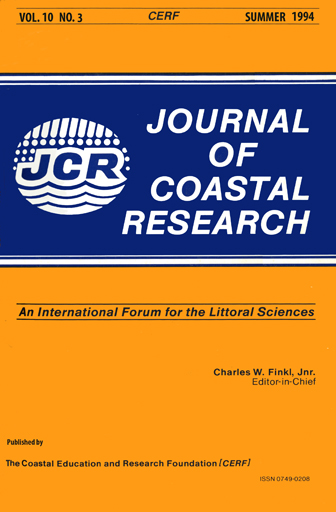Historical Shoreline Mapping (II): Application of the Digital Shoreline Mapping and Analysis Systems (DSMS/DSAS) to Shoreline Change Mapping in Puerto Rico
Keywords:
Aerial photography, cartography, coastal erosion, geographic information systems, photogrammetry, shoreline changeAbstract
A new, state-of-the-art method for mapping historical shorelines from maps and aerial photographs, the Digital Shoreline Mapping System (DSMS), has been developed. The DSMS is a freely available, public domain software package that meets the cartographic and photogrammetric requirements of precise coastal mapping, and provides a means to quantify and analyze different sources of error in the mapping process. The DSMS is also capable of resolving imperfections in aerial photography that commonly are assumed to be nonexistent. The DSMS utilizes commonly available computer hardware and software, and permits the entire shoreline mapping process to be executed rapidly by a single person in a small lab. The DSMS generates output shoreline position data that are compatible with a variety of Geographic Information Systems (GIS). A second suite of programs, the Digital Shoreline Analysis System (DSAS) has been developed to calculate shoreline rates-of-change from a series of shoreline data residing in a GIS. Four rate-of-change statistics are calculated simultaneously (end-point rate, average of rates, linear regression and jackknife) at a user-specified interval along the shoreline using a measurement baseline approach. An example of DSMS and DSAS application using historical maps and air photos of Punta Uvero, Puerto Rico provides a basis for assessing the errors associated with the source materials as well as the accuracy of computed shoreline posit ions and erosion rates. The maps and photos used here represent a common situation in shoreline mapping: marginal-quality source materials. The maps and photos are near the usable upper limit of scale and accuracy, yet the shoreline positions are still accurate ±9.25m when all sources of error are considered. This level of accuracy yields a resolution of +0.51 m/yr for shoreline rates-of-change in this example, and is sufficient to identify the short-term trend (36 years) of shoreline change in the study area.


